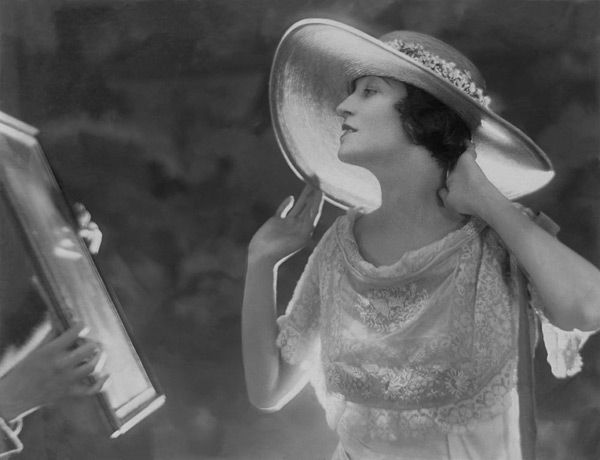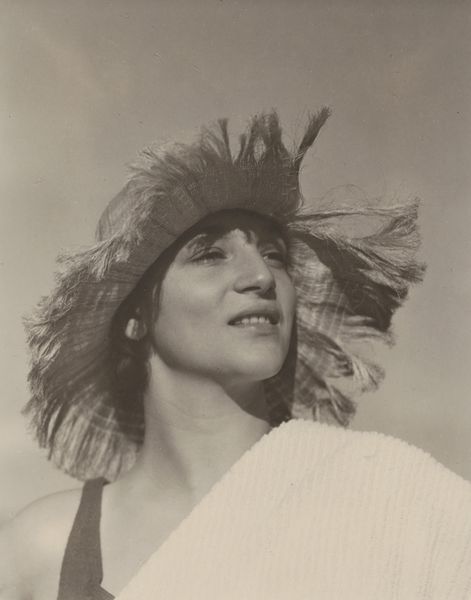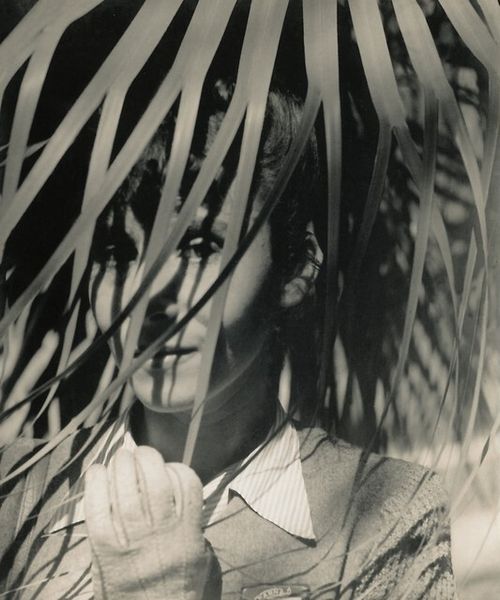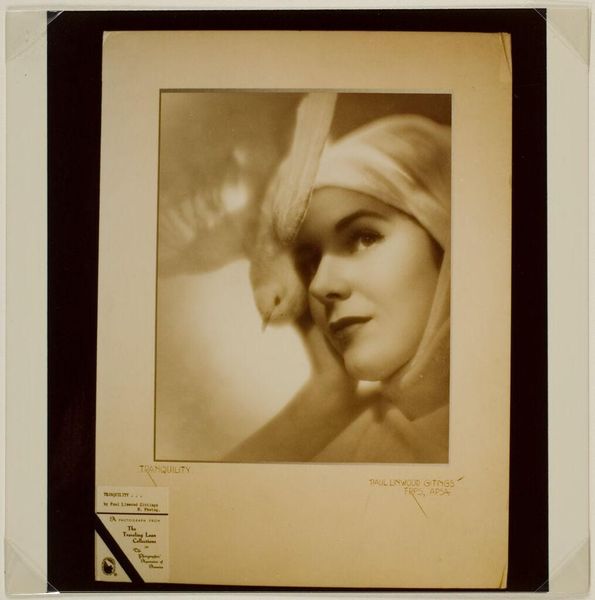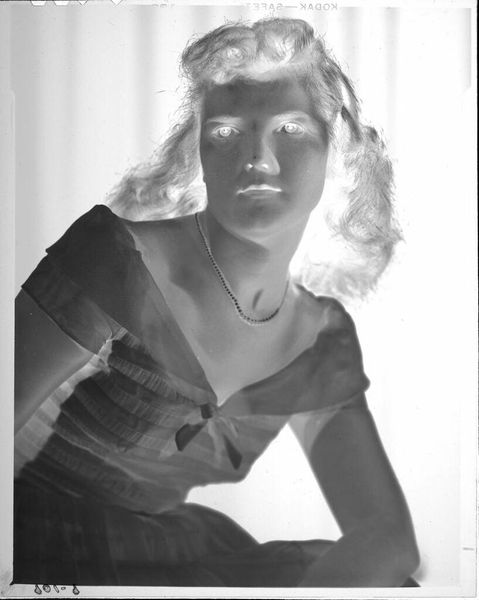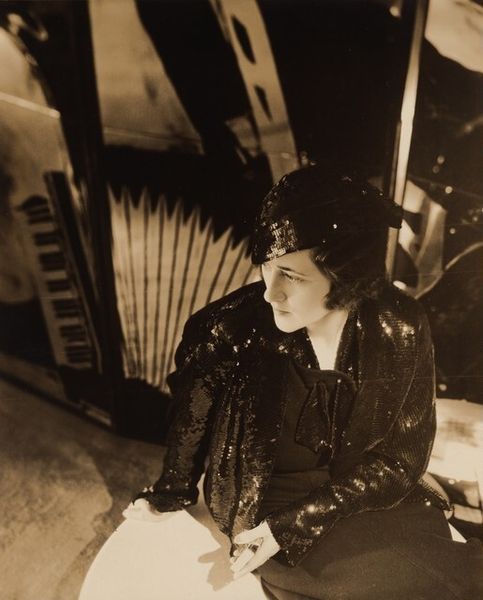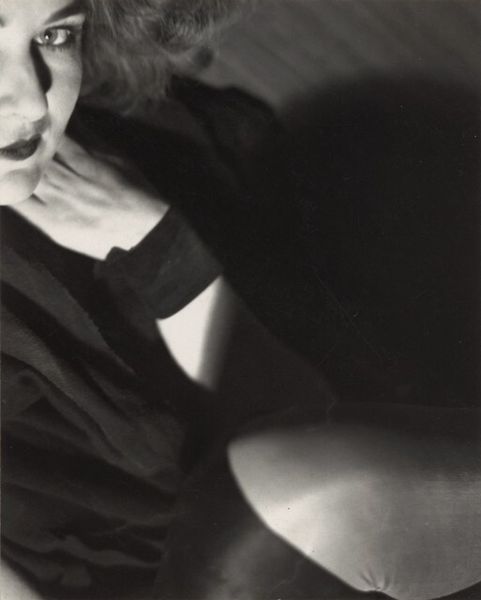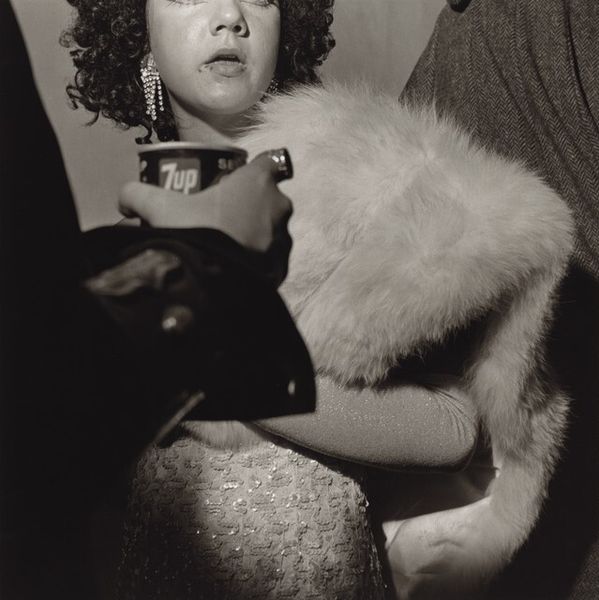
Copyright: Public domain
Editor: Here we have Nicola Perscheid’s "Manja Tzatschewa," a gelatin-silver print from 1919. It's a striking portrait; the textures are so rich, from the fur to the delicate flower she holds. What immediately jumps out at you when you look at it? Curator: The careful articulation of tonal values is quite compelling. Notice how Perscheid orchestrates light and shadow to sculpt the subject’s features, achieving a soft focus effect. This deliberate manipulation transcends mere representation, inviting a deeper contemplation of form and texture. Observe, too, the subject's pose. Does the slight tilt of her head contribute to a specific compositional rhythm, in your opinion? Editor: Yes, the tilt definitely adds a sense of dynamism. It keeps the composition from feeling static. It almost feels like the diagonals of the lines of the cap pull us to see it like that! Curator: Precisely. Consider also the interplay between the linearity of her headwear and the softness of the fur stole. These contrasting elements serve not merely as decorative details but contribute to the overall visual structure and offer insight to a symbolic intention by the photographer. What, would you say, is the relationship between these shapes? Editor: I see the sharp lines as creating almost a border or edge for her. Perhaps she needs the adornment, because of something not visible, because of something hidden in the rest of the piece. Curator: Interesting thought! It draws the viewer's gaze and encourages close study of the piece's intricate forms. By engaging with the artwork’s structure and materiality, we enrich our aesthetic perception. Editor: I’ve definitely gained a new appreciation for how even the smallest choices can have a profound impact. Curator: Indeed. The essence of the artwork lies not in what it depicts, but how it depicts, opening infinite venues for engagement and critical assessment.
Comments
No comments
Be the first to comment and join the conversation on the ultimate creative platform.
